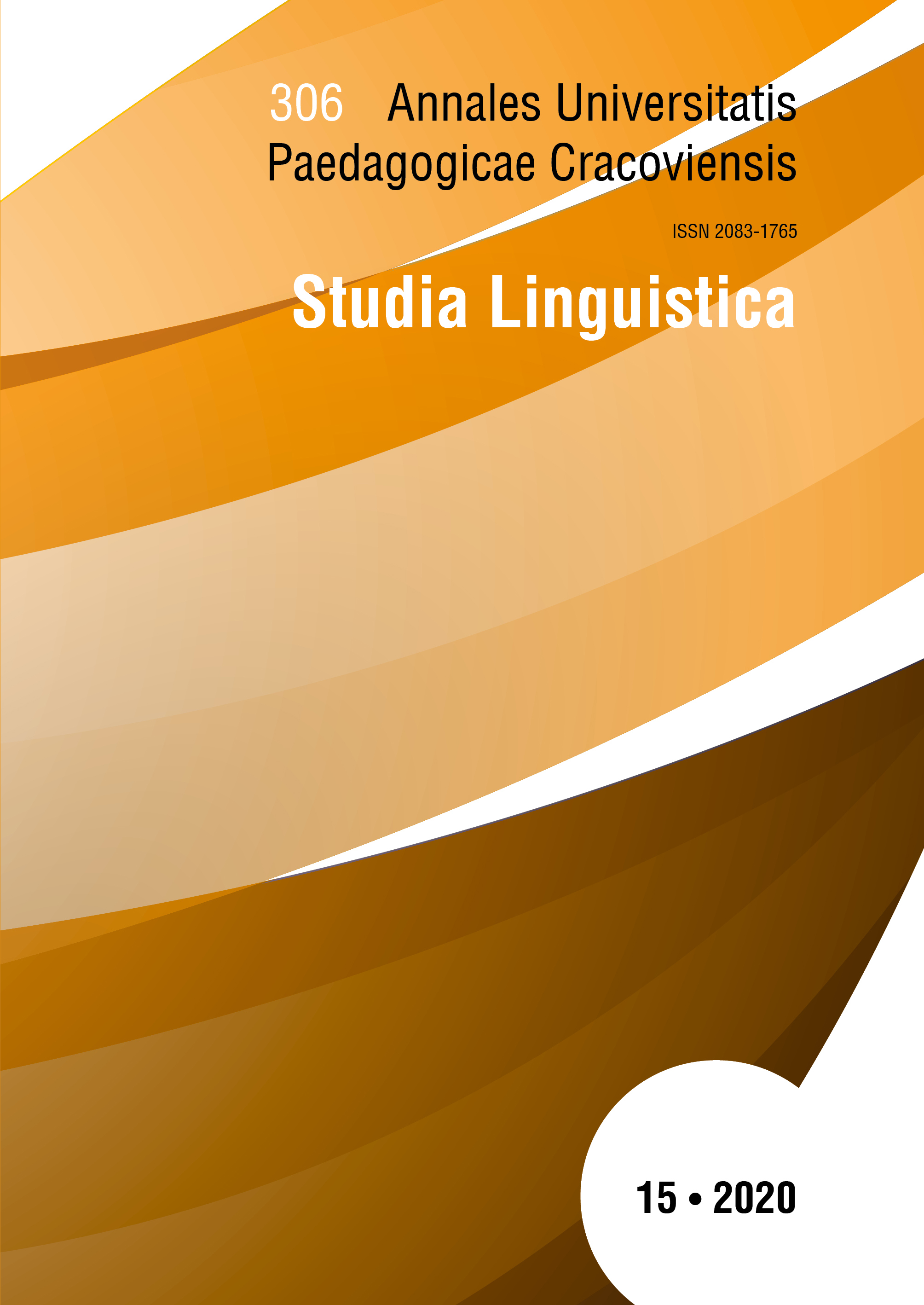Picturesqueness as a style feature of historical pamphlet of XVI th. century. Remarks on Acrostichis własnego wyobrażenia Kniaża Wielkiego Moskiewskiego by Walenty Neothebel
Main Article Content
Abstract
The main subject of the study is to point out the language and text exponents of picturesqueness as a style feature of historical pamphlet of XVI th. century. The observations were made on the example of the work Acrostichis własnego wyobrażenia Kniaża Wielkiego Moskiewskiego by Walenty Neothebel. One can indicate a few determinants of picturesqueness, they are: discontinuous words structures, proverbs and idioms, comparisons, enumerations and large and extensive description contexts. In general distinguished devices are not imaginative or exquisite, frequently being allied to simple, even colloquial language. In that the analyzed text is clearly vivid and evocative. The applied devices serve pragmatic effectiveness of the work, wich is its most important component. In the analyzed piece of work one can distinguish the features of more than one literary genre, e.g. pamphlet, morality play or dialogue, but the pragmatic aspect leads primarily to critical texts of political subject which are close right to the pamphlet. Furthermore, one can mark that Walenty Neothebel due to negative picture of tsar Ivan the Terrible presented in Acrostichis preserved the negative stereotype of Russians in Polish language and culture.
Downloads
Article Details
Author, submitting a text to the editorial board of the journal “Annales Universitatis Paedagogicae Cracoviensis. Studia Linguistica", certifies that the content of the article has not been published so far and that the work does not violate in any way the copyright or related rights of other person, as well as other rights of third parties, and that no one's rights to the work (or any part thereof) have been missed. After signing the contract, the property rights to the published materials are transferred to the Scientific Publisher of the University of the National Education Commission, Krakow.
“Annales Universitatis Paedagogicae Cracoviensis. Studia Linguistica” is an open access journal, and all its content is made available free of charge to users and institutions under the Creative Commons CC-BY-NC-ND 4.0 license (attribution, non-commercial use, no derivative works). Under this license, the authors agree that their work may be lawfully reused for any purpose, except for commercial purposes, without the prior consent of the author or publisher. Everyone can read, download, copy, print, distribute and process these works, provided that the author's marking and the original publication place are correct. Published texts may not be used to create derivative works (e.g. to translate and publish in another language without the consent of the publisher). This is in line with the BOAI (Budapest Open Access Initiative) definition. "Studia Linguistica" does not charge for submitting or processing articles.
References
Abramowska J., 1998, Moralitet, [w:] Słownik literatury staropolskiej. Średniowiecze – renesans – barok, red. T. Michałowska, przy udziale B. Otwinowskiej, E. Sarnowskiej--Temeriusz, Wrocław, s. 558–562.
Google Scholar
Abramowska J., 2002, O staropolskich enumeracjach, [w:] Dzieło literackie i książka w kulturze. Studia i szkice ofiarowane Profesor Renardzie Ocieczek w czterdziestolecie pracy naukowej i dydaktycznej, red. nauk. I. Opacki, przy współudziale B. Mazurkowej, Katowice, s. 304–311.
Google Scholar
Dziechcińska H., 1976, W krzywym zwierciadle. O karykaturze i pamflecie czasów renesansu, Wrocław.
Google Scholar
Dziechcińska H., 1998, Paszkwil, [w:] Słownik literatury staropolskiej. Średniowiecze – renesans – barok, red. T. Michałowska, przy udziale B. Otwinowskiej, E. Sarnowskiej--Temeriusz, Wrocław, s. 626–628.
Google Scholar
Franczak G., 2016, Wstęp, [w:] W. Neothebel, Acrostichis własnego wyobrażenia Kniaża Wielkiego Moskiewskiego, oprac. G. Franczak, Warszawa, s. 5–67.
Google Scholar
Głowiński M., Kostkiewiczowa T., Okopień-Sławińska A., Sławiński J., 1989, Słownik terminów literackich, Wrocław.
Google Scholar
Grochowski M., 1978, Wprowadzenie do teorii wyliczenia jako zasady budowy tekstu, „Pamiętnik Literacki” LXIX, z. 3, s. 131–147.
Google Scholar
Hernas C., 1998, Barok, Warszawa.
Google Scholar
Janion M., 2006, Niesamowita Słowiańszczyzna. Fantazmaty literatury, Kraków.
Google Scholar
Janowska A., 2007, Polisemia staropolskich czasowników. Źródła, swoistość, konsekwencje, Katowice.
Google Scholar
Krążyńska Z., 2000, Z zagadnień semantyki i składni staropolskich czasowników, [w:] Studia historycznojęzykowe III: Rozwój polskiego systemu językowego, red. K. Rymut i W.R. Rzepka, Kraków, s. 213–219.
Google Scholar
Maliszewski K., 2001, Komunikacja społeczna w kulturze staropolskiej. Studia z dziejów kształtowania się form i treści społecznego przekazu w Rzeczypospolitej szlacheckiej, Toruń.
Google Scholar
Maliszewski K., 2006, W kręgu staropolskich wyobrażeń o świecie, Lublin.
Google Scholar
Niewiara A., 2000, Wyobrażenia o narodach w pamiętnikach i dziennikach z XVI–XIX wieku, Katowice.
Google Scholar
Niewiara A., 2006, Moskwicin – Moskal – Rosjanin w dokumentach prywatnych. Portret, Łódź.
Google Scholar
Pisarkowa K., 1976, O składni „Kazań gnieźnieńskich”: partykuła „ć”, „ci”, [w:] Studia z polskiej składni historycznej I, red. nauk. J. Twardzikowa, Kraków, s. 7–39.
Google Scholar
Rejter A., 2000, Wizerunek Świętej Rodziny w staropolskiej literaturze apokryficznej. Funkcje opisu, [w:] Бiблiя i кyльтypa. Збipник нayкoвих cтaтeй, Випycк I. Вiдпoвiдaльний peдaктop A.Є. Нямцy, Чepнiвцi, s. 132–137.
Google Scholar
Witosz B., 1997, Opis w prozie narracyjnej na tle innych odmian deskrypcji. Zagadnienia struktury tekstu, Katowice.
Google Scholar
